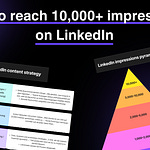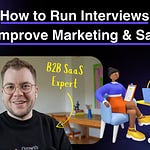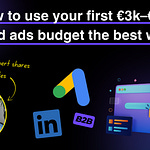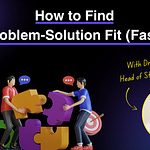New here? Hey, I am Valentin. B2B SaaS Marketing Expert & Advisor.
Each week, I share practical marketing strategies, tactics and learnings designed to help you scale your B2B business to €1 million ARR and beyond 🚀
Make sure to subscribe to not miss out on any episode!
1. Your profile needs to sell, not your posts.
One of the biggest misconceptions among founders: content should sell directly.
That’s not how LinkedIn works.
The real job of content is to trigger emotion, spark interest, and drive traffic to your profile.
Think about it like a web funnel.
If you run ads, in most cases (e.g. paid social) you don’t want sell directly. Your goal is to spark interest, make people visit your landing page and convert there.
For organic LinkedIn your profile is your landing page, that’s where the real conversion happens.
2. Deep audience understanding is non-negotiable
Effective content starts with understanding your target audience inside and out:
What words do they use?
What problems are they struggling with?
What aspirations drive them?
Example:
If you're talking to agency owners or SaaS founders, terms like “conversion rate,” “ICP,” or “lead funnel” make sense.
But if your target audience is traditional SMB owners, you’ll lose them with jargon.
Here’s a practical framework that Michelle is using:
List 10 problems, 10 desires, 10 goals, 10 aspirations, and 10 fears of your audience.
Those 50 triggers will give you a steady stream of content ideas for months.
3. Turn traffic into leads with simple lead magnets
As already mentioned, your LinkedIn profile is a landing page – treat it like one.
Add lead magnets in your Featured section: downloadable templates, checklists, guides.
Goal: capture email addresses and build relationships off-platform.
Tips:
Rotate your lead magnets regularly
Mention them directly in your content
Don’t be afraid to gate content – as long as it solves a real problem, it’s a fair ask
4. How much time LinkedIn really takes
If someone says “you can do LinkedIn in 1 hour per week,” they’re either lying or not getting results.
What it actually takes:
1 to 1.5 hours per day, if you do everything yourself
3–4 posts per week
Community management (comments, DMs) right after posting
If your time is limited, consider outsourcing content creation (research, writing, strategy).
Then focus your energy on engagement and relationship-building.
5. Don’t just post. Build a system.
Don’t start with: “I’ll just post something.”
Start with:
Who exactly am I talking to?
What emotion do I want to trigger?
What action should follow (profile visit, DM, lead magnet signup)?
LinkedIn isn’t a sales channel – it’s a trust- and relationship-building channel.
Build trust, and sales will follow.
Conclusion:
LinkedIn works – but only if you approach it strategically.
Speak your audience’s language, create content that taps into real emotions, use lead magnets wisely, and build a simple system you can stick to.
That’s how you turn visibility into real revenue.
That’s it for today, hope you like this short episode. Please leave your feedback in the comments, if this article was of any help. 🫶
Until next week!
Cheers
Valentin
Want to learn more about B2B Marketing & Growth?
Subscribe to the newsletter and follow me on LinkedIn.










